From Novice to Pro: A Beginner’s Guide to Bass Fishing Mastery
Bass Fishing for the Absolute Beginner: Advice on How to Start
Bass fishing is a thrilling and rewarding activity that allows you to immerse yourself in the beauty of nature while pursuing the excitement of reeling in a trophy bass. Whether you’re a complete novice to fishing or have some experience with other types of angling, this comprehensive guide will equip you with the essential knowledge and techniques to embark on your bass fishing journey. I hope you enjoy this beginner’s guide to bass fishing. Leave a comment either way.
Introduction
Picture yourself standing by a serene lake, casting your line into the shimmering water, and feeling the anticipation build with each twitch of your bait. Bass fishing offers an escape from the hustle and bustle of daily life, allowing you to connect with nature, relax, and experience the sheer joy of landing a bass.
In this beginner’s guide, we’ll dive into the fascinating world of bass fishing and explore everything you need to know to get started. From understanding bass behaviour to selecting the right gear and mastering essential techniques, we’ll provide you with the tools and insights to become a confident angler.
Why Choose Bass Fishing?
Before we delve into the nitty-gritty details, let’s take a moment to understand why bass fishing is such a popular and captivating pursuit. The allure of bass fishing lies in its unique blend of challenge, excitement, and tranquillity.
The Thrill of the Catch
Unlike other types of fishing, bass fishing offers an adrenaline rush that keeps anglers hooked. The Bass are known for their aggressive strikes, powerful fights, and impressive acrobatics, making every catch a memorable experience. Just imagine the exhilaration as you feel the rod bend and the line tightens—a sure sign that a feisty bass is on the other end.
Relaxation and Connection with Nature
In today’s fast-paced world, finding moments of serenity is increasingly important. Bass fishing provides the perfect opportunity to escape the noise and stress of everyday life. Whether you’re alone on the water or enjoying the company of friends and family, the peaceful ambience and beautiful surroundings offer a welcome respite.
Understanding Bass Behavior
To increase your chances of success as a bass angler, it’s crucial to understand the behaviour and habits of these remarkable fish. The Bass are known for their cunning and adaptability, and by unravelling their secrets, you’ll be better equipped to outsmart them.
Habitat Preferences of Bass
Bass, particularly the popular largemouth and smallmouth bass species, can be found in a wide range of freshwater habitats, making them accessible to anglers in various locations. Understanding the specific environments that bass prefer will significantly enhance your ability to locate them and increase your chances of landing a prized catch.
Lakes
Lakes are often prime habitats for bass due to their abundant food sources and diverse structures. Bass are commonly found near submerged vegetation, such as lily pads, hydrilla, or milfoil, as these areas provide cover and attract prey. They also frequent areas with underwater structures like submerged logs, stumps, and rocks, where they can hide and ambush their prey. When fishing in lakes, focus your efforts on these vegetated areas and structures, as they serve as ideal hiding spots for bass.
Rivers
Rivers offer a dynamic and ever-changing environment for bass fishing. Bass can be found in various sections of rivers, including shallow riffles, deep pools, and eddies. They prefer areas with a moderate current flow, as it brings in a constant supply of food. Look for areas where the current breaks, such as behind rocks or fallen trees, as bass often position themselves there to conserve energy and wait for passing prey. Additionally, submerged vegetation and sunken debris can provide excellent cover and attract bass in river systems.
Ponds
Ponds, both natural and man-made, are fantastic habitats for bass due to their confined space and abundant food sources. In ponds, bass tends to congregate near areas with vegetation, such as lily pads, reeds, or submerged weeds. These vegetated areas offer shelter for prey and provide ample opportunities for bass to ambush them. Additionally, look for submerged structures, such as fallen trees or rock piles, as they attract bass and provide hiding spots.
Reservoirs
Reservoirs, which are created by damming rivers, offer vast expanses of water that can hold sizable populations of bass. Understanding the structure and topography of reservoirs is key to locating bass. Points, submerged humps, and creek channels are productive areas to target, as they provide bass with easy access to both shallow and deep water. Reservoirs often have submerged structures, such as old roadbeds, bridge pilings, and standing timber, which serve as magnets for bass.
Wetlands and Backwaters
Wetlands and backwaters are often overlooked but can be incredibly productive habitats for bass. These areas are characterized by dense vegetation, such as cattails, grasses, and lily pads, which offer abundant cover for bass to hide and ambush prey. They also provide a rich food source in the form of insects, small fish, and amphibians. When fishing in wetlands and backwaters, target the edges of vegetation, as bass often lurks in the shadows, ready to strike at passing prey.
Understanding the specific habitat preferences of bass in different freshwater environments allows you to narrow down your fishing locations and focus your efforts on areas that are more likely to hold bass. By honing in on their preferred habitats, you’ll increase your chances of encountering these formidable fish and enjoy a more successful bass fishing experience.
Feeding Patterns and Seasonal Variations
Bass, like many other fish species, exhibit different feeding patterns that vary throughout the year. Understanding these patterns is crucial for successful bass fishing, as it allows you to adjust your techniques and bait selection to match their feeding preferences. Several factors influence bass feeding behaviour, including water temperature, weather conditions, and the availability of prey.
Spring Feeding Patterns
During the spring, as water temperatures begin to rise, bass becomes more active and undergo a period of increased feeding. This is an exciting time for anglers, as bass are preparing for spawning and are more likely to aggressively strike lures and baits. They feed heavily on smaller fish, insects, and other aquatic creatures as they build up energy for the upcoming spawning season. Targeting shallow areas near spawning grounds, such as coves, bays, and shallower flats, can yield excellent results during this season. Effective spring lures include crankbaits, spinnerbaits, soft plastic worms, and jigs.
Summer Feeding Patterns
As summer sets in and water temperatures rise even further, bass feeding patterns undergo some changes. Bass tends to become more lethargic during the hot summer months, seeking cooler and deeper water to escape the heat. They may retreat to deeper drop-offs, submerged structures, or areas with dense vegetation. During this period, the bass often targets prey such as crayfish, frogs, and larger baitfish. Techniques such as flipping and pitching jigs, using Texas-rigged plastic worms, or employing topwater lures early in the morning and late in the evening can be effective in enticing summer bass to strike.
Fall Feeding Patterns
Fall brings about significant changes in bass behaviour as they prepare for the approaching winter. Bass enters a period of increased feeding in anticipation of the colder months when their metabolism slows down. They actively pursue baitfish that are schooling up, making them easier targets. Bass can be found in a wide range of locations during the fall, including shallow flats, points, and areas near submerged vegetation. Popular lure choices during this season include crankbaits, jerkbaits, lipless vibrating lures, and swimbaits.
Winter Feeding Patterns
Winter poses challenges for bass fishing, as colder water temperatures significantly reduce their activity level. Bass becomes less aggressive and feeds less frequently. However, they still need to eat to sustain themselves. During winter, bass tends to move to deeper water where temperatures are more stable. Slow and subtle presentations are key during this season, with techniques such as jigging, drop shotting, and using small finesse baits often yielding the best results. Targeting areas near steep drop-offs, channel edges, and submerged structures can increase your chances of encountering winter bass.
By studying the feeding patterns and seasonal variations of bass, you can tailor your fishing techniques and bait selection to match their preferences. Understanding when and where the bass is most likely to be actively feeding allows you to maximize your chances of success on the water. Remember to consider factors such as water temperature, weather conditions, and the availability of prey when planning your bass fishing outings. Adaptability and knowledge of feeding patterns will help you become a more skilled and successful bass angler.
Factors That Affect Bass Activity
Bass activity can be influenced by various factors, which can make them more or less likely to bite. Understanding these influences and learning to recognize them will give you an edge in predicting when and where bass are most active, improving your chances of a successful fishing trip. Let’s explore some of the key factors that affect bass activity.
Weather Conditions
Weather conditions play a significant role in bass behaviour and feeding patterns. Bass are sensitive to changes in atmospheric pressure, temperature, and cloud cover. Understanding how these factors impact bass activity can help you plan your fishing trips accordingly.
- Barometric Pressure: Bass tend to be more active and likely to feed when the barometric pressure is stable or rising. Falling barometric pressure, which often accompanies approaching storm systems, can make the bass more lethargic and less likely to bite. Monitoring barometric pressure trends can help you determine the best times to target bass.
- Temperature: Bass are cold-blooded creatures, meaning their body temperature is influenced by the surrounding water temperature. As water temperatures rise, bass becomes more active and more inclined to feed. They are most active in the range of comfortable temperatures, typically between 60°F and 80°F (15°C to 27°C). During hot summer months or cold winter periods, the bass may become less active and seek shelter in deeper or cooler water.
- Cloud Cover: Bass tends to be more active and willing to strike during periods of overcast skies. Cloud cover reduces the amount of direct sunlight, creating a more comfortable and conducive environment for bass to move and feed. On sunny days, bass may seek shelter in submerged structures or vegetation to avoid direct sunlight, becoming less active.
Water Clarity
Water clarity, or visibility, also affects bass activity. Bass are opportunistic predators, relying heavily on their sight to locate and strike prey. The clarity of the water can influence their ability to detect and target potential meals.
- Clear Water: In clear water conditions, bass rely heavily on their vision to hunt. They may be more cautious and selective when approaching lures or bait. Using natural-looking lures or employing finesse techniques can be effective in clear water, as it mimics the natural prey and increases your chances of enticing a strike.
- Stained or Murky Water: In stained or murky water, the bass has reduced visibility and relies more on their other senses, such as vibration and sound, to locate prey. In these conditions, lures with more vibration or noise can be effective in grabbing their attention. Brightly coloured lures or those with contrasting patterns can also help bass locate the bait more easily.
Time of Day
The time of day can significantly influence bass activity levels and feeding patterns. While bass can be caught at any time, certain periods tend to be more productive than others.
- Early Morning and Late Evening: Dawn and dusk are often considered prime feeding times for bass. During these low-light periods, bass are more comfortable venturing into shallower areas to hunt for prey. Topwater lures, such as buzzbaits or poppers, can be particularly effective during these times as bass are more willing to strike on the water’s surface.
- Midday: In the middle of the day, especially during hot summer months, the bass may seek deeper or shaded areas to avoid direct sunlight and conserve energy. Fishing deeper water or targeting areas with cover, such as submerged structures or vegetation, can increase your chances of encountering actively feeding bass during midday periods.
Moon Phase
While the influence of the moon phase on bass activity is still a topic of debate among anglers, many believe that it can play a role in their feeding behaviour. Some anglers suggest that the moon phase affects the movement and feeding patterns of baitfish, which in turn can influence bass activity. During periods of a full or new moon, some anglers believe bass may feed more actively. However, it’s important to note that other factors such as weather conditions and water temperature still have a more significant impact on bass activity.
By considering these factors, such as weather conditions, water clarity, time of day, and moon phase, you can make more informed decisions when planning your bass fishing trips. Being aware of how these influences affect bass activity will give you an advantage in choosing the right techniques, lures, and locations to increase your chances of a successful and rewarding bass fishing experience.
Essential Gear for Beginners
Before you hit the water, it’s essential to equip yourself with the right gear. Here are the basics you’ll need to get started on your bass fishing journey.
Fishing Rods and Reels
Selecting the appropriate fishing rod and reel combo is essential for a comfortable and enjoyable fishing experience. The right combination will not only enhance your casting and fishing techniques but also provide you with the power and control needed to handle different fishing situations. Let’s explore the different types of rods and reels available, their features, and how to select the right one for your needs.
Fishing Rods
Fishing rods come in various lengths, materials, and actions, each designed to suit specific fishing styles and target species. Understanding the different types of fishing rods will help you make an informed choice.
- Baitcasting Rods: Baitcasting rods are designed for more precision and power. They feature a reel seat positioned on top of the rod, allowing for better control and accuracy during casts. Baitcasting rods are commonly used for targeting larger species, such as bass or pike, and can handle heavier lures and baits. They require a bit more skill to master casting techniques but provide greater control, especially when fishing around heavy cover or structure.
- Spinning Rods: Spinning rods are versatile and widely used for various fishing applications. They feature a reel seat located on the underside of the rod, allowing the reel to hang down. Spinning rods excel in casting lighter lures and baits, making them ideal for finesse fishing or targeting smaller species like trout and panfish. They are also beginner-friendly due to their ease of use and forgiving nature.
When choosing a fishing rod, consider factors such as the target species, fishing technique, and the type of water you’ll be fishing in. Select a rod that matches the line weight and lure weight range you intend to use for the best performance.
Fishing Reels
Fishing reels are designed to hold and release fishing lines, providing smooth line retrieval and drag systems to control the fighting fish. Here are the main types of fishing reels to consider:
- Baitcasting Reels: Baitcasting reels offer excellent control and accuracy, making them a favourite among experienced anglers. These reels are mounted on top of the rod and feature a revolving spool. Baitcasting reels are known for their ability to handle heavier lines and lures, making them suitable for casting larger baits and targeting larger species. They require proper adjustment and skilful thumb control to prevent backlash or “bird’s nests.”
- Spinning Reels: Spinning reels are the most popular type of reel for anglers of all skill levels. They are easy to use and offer versatile performance. Spinning reels are mounted on the underside of the fishing rod and feature a fixed spool design. They are ideal for casting light lures and baits, making them suitable for finesse fishing and targeting a wide range of species.
When selecting a fishing reel, consider the type of rod you have or plan to purchase, the fishing technique, the target species, and the fishing environment. Ensure the reel has a smooth drag
Line Selection and Considerations
Choosing the right fishing line is a critical but often overlooked aspect of bass fishing. The fishing line is the direct link between you and the fish, and selecting the appropriate line can significantly impact your chances of success. Let’s explore the various types of fishing lines, their strengths, and the factors to consider when choosing the right line for different bass fishing scenarios.
Monofilament Line
The monofilament line, commonly known as mono, is a versatile and widely used fishing line. It is made of a single strand of nylon or similar material. Here are some key considerations for using a monofilament line:
- Strength and Stretch: Monofilament lines have a good strength-to-diameter ratio and offer moderate stretch. The stretch can act as a shock absorber, especially when fighting hard-fighting fish like bass, reducing the risk of line breakage. However, the stretch can also reduce sensitivity, making it slightly more difficult to detect subtle bites.
- Abrasion Resistance: Monofilament lines provide decent abrasion resistance, allowing them to withstand contact with rocks, submerged structures, and vegetation to some extent. However, they are more prone to abrasion compared to other types of lines like fluorocarbon or braided lines.
- Buoyancy: Monofilament lines are buoyant, meaning they tend to float on the water’s surface. This buoyancy can be advantageous when fishing topwater lures or situations where you want your bait to stay near the surface. However, it can also create more line drag and affect lure action when fishing deeper or trying to achieve a specific sinking rate.
- Versatility: Monofilament lines are suitable for a wide range of bass fishing techniques, including topwater fishing, crankbait fishing, and finesse techniques. They are available in various pound test strengths to accommodate different fishing scenarios.
Fluorocarbon Line
The Fluorocarbon line is another popular choice among bass anglers. It is made from a special type of polymer that is nearly invisible underwater. Consider the following factors when using fluorocarbon line:
- Invisibility: Fluorocarbon line has excellent light refraction properties, making it nearly invisible underwater. This can be advantageous in clear water or when targeting highly pressured bass that may be line-shy. The low visibility of fluorocarbon allows for more natural presentations.
- Sensitivity: Fluorocarbon lines offer greater sensitivity compared to monofilament lines. This enhanced sensitivity allows you to feel even subtle bites and changes in bottom structure, improving your ability to detect strikes and adjust your hookset.
- Abrasion Resistance: Fluorocarbon lines provide superior abrasion resistance compared to monofilament lines. This durability makes them suitable for fishing in and around heavy cover, such as rocks, wood, or thick vegetation.
- Sink Rate: Fluorocarbon lines have a higher density than water, causing them to sink faster. This characteristic is advantageous when fishing subsurface or bottom-bouncing techniques where you want your bait to reach the desired depth quickly.
- Stiffness: Fluorocarbon lines can be stiffer than monofilament lines, which can affect casting distance and the natural action of some lures. It’s important to choose a fluorocarbon line with the appropriate flexibility for the technique you’re using.
Braided Line
A braided line is a high-strength fishing line made by weaving together multiple strands of synthetic fibres like Spectra or Dyneema. Consider the following when using the braided line:
- Strength: Braided lines have exceptional strength-to-diameter ratios. They are thinner yet stronger than monofilament or fluorocarbon lines of the same pound test, allowing you to use a higher line capacity on your reel.
- Low Stretch: Braided lines have minimal stretch, providing excellent sensitivity and a direct connection to your bait. This sensitivity allows for quick and precise hooksets, especially in situations where bass may strike and release the bait rapidly.
- Abrasion Resistance: Braided lines offer excellent abrasion resistance, making them suitable for fishing in heavy cover and structures where other lines may break.
- Visibility: Braided lines are highly visible in the water due to their bright colours. This visibility can be advantageous when detecting line movement or fishing in low-light conditions. However, in clear water or when the bass is line-shy, it may be necessary to use a fluorocarbon or monofilament leader to minimize the visibility of the braided line.
When choosing a fishing line, consider the fishing technique, water conditions, and the behaviour of the bass you are targeting. It’s also essential to match the line strength to the rod and reel you are using to ensure optimal performance and prevent line breakage.
Must-Have Tackle and Bait
The vast array of lures and baits available can be overwhelming for beginners. It’s essential to have a well-rounded selection of tackle and bait to increase your chances of enticing bass into biting. In this section, we’ll demystify the world of bass lures, highlighting the essential baits and tackle you’ll need for a successful bass fishing experience.
Understanding the Basics of Tackle
Before diving into specific baits, let’s explore the essential tackle components you’ll need:
- Fishing Rod: Choose a medium to medium-heavy fishing rod with a length of around 6 to 7 feet / 1.83 to 2.13m. This length and power provide the versatility needed to handle various fishing techniques and lure presentations.
- Fishing Reel: Opt for a spinning reel or a baitcasting reel, depending on your preference and experience level. Select a reel size appropriate for the line you’ll be using. For a beginner, it is best to start with a spinning reel.
- Fishing Line: Use monofilament, fluorocarbon, or braided line based on the fishing conditions and techniques you’ll be employing. Monofilament lines are versatile and beginner-friendly, while fluorocarbon lines offer better invisibility underwater. Braided lines provide strength and sensitivity for specific applications.
- Hooks: Have a variety of hooks in different sizes, including offset worm hooks, EWG (Extra Wide Gap) hooks, and treble hooks. Select the appropriate hook size depending on the bait you’ll be using.
- Weights: Carry a range of bullet weights, drop shot weights, and split shot weights. These weights allow you to adjust the sink rate of your bait and present it at the desired depth.
- Swivels and Snaps: Swivels and snaps can be useful for quickly changing lures or preventing line twists. They provide convenience and flexibility during your fishing sessions.
Essential Bass Baits
Now that we’ve covered the essential tackle components, let’s explore some must-have baits for bass fishing:
- Plastic Worms: Plastic worms are incredibly versatile and effective for bass fishing. Opt for different sizes, colours, and styles such as Senkos, finesse worms, or curly-tail worms. Texas rigging or Carolina rigging these worms is a popular technique.
- Jigs: Jigs are versatile and productive baits that mimic crawfish or baitfish. Have a selection of football jigs, flipping jigs, and swim jigs. Pair them with matching trailers to create a lifelike presentation.
- Crankbaits: Crankbaits are designed to imitate wounded or fleeing baitfish. Carry a variety of diving depths, shapes, and colours to cover different water conditions. Experiment with shallow-diving, medium-diving, and deep-diving crankbaits.
- Spinnerbaits: Spinnerbaits consist of a metal blade that spins and creates flashes and vibrations in the water. They are excellent for covering water quickly and enticing reaction strikes. Have different sizes and colours to adapt to changing conditions.
- Topwater Lures: Topwater lures create a surface disturbance, imitating prey on the water’s surface. Carry a selection of topwater baits such as poppers, buzzbaits, and walking baits. They can be effective during low-light conditions or when bass are actively feeding on the surface.
- Soft Plastic Creature Baits: Creature baits resemble creatures like crayfish or lizards and are effective in enticing bass strikes. Have a variety of creature baits in different colours and sizes to match the forage in your fishing area.
Remember, the selection of tackle and baits may vary depending on the specific fishing conditions and preferences. It’s always a good idea to research the local fishing regulations and consult with experienced anglers in your area for specific bait recommendations. As you gain more experience and understanding of bass behaviour, you can expand your tackle collection and experiment with different bait presentations to find what works best for you.
Choosing the Right Fishing Spot
Finding the perfect fishing spot can make all the difference between a successful day on the water and a disappointing one. Here’s what you need to know to locate bass hotspots.
Researching Potential Fishing Locations
Whether you’re exploring local lakes, rivers, or reservoirs, conducting thorough research beforehand can significantly improve your chances of finding productive fishing spots. We’ll share valuable tips on gathering information about potential locations and what to look for when evaluating their potential.
Understanding Different Types of Water Bodies
Different types of water bodies offer unique challenges and opportunities for bass fishing. We’ll explore the characteristics of lakes, rivers, ponds, and reservoirs, along with the strategies you can employ to maximize your chances of success in each environment.
Identifying Bass Hotspots
Bass are cunning predators that prefer specific areas within their habitat. We’ll reveal the key features and structures that attract bass, such as weed beds, rocks, submerged logs, and drop-offs. Understanding these hotspots will help you target bass more effectively.
Mastering Basic Bass Fishing Techniques
With the right gear and a suitable fishing spot, it’s time to master the essential techniques that will entice bass to strike. Here are some fundamental techniques every beginner should learn.
Casting and Retrieving
Mastering casting accuracy and retrieving techniques are crucial skills in bass fishing. The ability to place your bait or lure precisely where you want it and enticingly manipulate its movement can greatly increase your chances of enticing a strike from a bass. Let’s walk through the proper casting techniques, retrieving methods, and subtle variations that can make all the difference in your bass fishing success.
Casting Techniques
Accurate casting allows you to present your bait or lure precisely where the bass are hiding, whether it’s near structure, vegetation, or other potential feeding areas. Here are some key casting techniques to help you improve your accuracy:
- Overhead Cast: The overhead cast is the most common casting technique. Hold the rod with your dominant hand and grip the reel firmly. With your other hand, hold the rod above the reel seat. To make a cast, bring the rod tip back over your shoulder, then swiftly forward while releasing the line with your finger or thumb. Practice your timing and release to achieve a smooth and accurate cast.
Check the video on YouTube. https://youtu.be/xmG9jdYUPhM - Sidearm Cast: The sidearm cast is useful when casting under low-hanging branches or vegetation. Hold the rod parallel to the ground with your elbow slightly bent. Swing your arm forward in a sidearm motion, releasing the line at the desired point. This technique allows you to cast with a lower trajectory, reducing the risk of snagging obstacles.
- Roll Cast: The roll cast is beneficial when dealing with limited space or obstacles behind you. Hold the rod parallel to the water’s surface, then quickly bring it forward while using a slightly upward motion. As the line straightens out, stop the forward motion abruptly, allowing the line to roll out onto the water. This technique is useful for accurate short-distance casts.
Practising these casting techniques will help you gain control over your presentations and accurately deliver your bait or lure to the desired locations.
Retrieving Methods
Retrieving your bait or lure enticingly is crucial to trigger strikes from bass. Here are some effective retrieving methods to consider:
- Straight Retrieve: The straight retrieve is a straightforward method. It involves reeling in your bait or lure at a consistent speed. This method works well when using lures that mimic the swimming action of baitfish or when covering larger areas of water. Experiment with different retrieval speeds to find the one that entices the most strikes.
- Stop-and-Go Retrieve: The stop-and-go retrieve involves periodically pausing your retrieve to imitate a wounded or vulnerable prey. After a few cranks of the reel, pause briefly, then resume reeling. This technique can trigger reaction strikes from bass, especially when using lures like jerkbaits or crankbaits.
- Bottom Bouncing: Bottom bouncing is effective when fishing with jigs or soft plastic baits. Allow your bait to sink to the bottom, then lift your rod tip and reel in the slack, causing the bait to hop along the bottom. Repeat this bouncing motion as you retrieve, imitating a crawfish or a feeding baitfish near the lakebed.
- Jerking and Twitching: Jerking and twitching your bait or lure can simulate erratic movements of injured or fleeing prey. This technique is commonly used with topwater lures, such as poppers or walking baits. Use sharp rod twitches or gentle pops of the rod tip to create splashes or subtle movements that attract bass.
Experimenting with different retrieving methods and varying your retrieval speeds can help you determine what triggers the most strikes from bass in specific fishing situations.
Subtle Variations
Adding subtle variations to your casting and retrieving techniques can sometimes make all the difference in enticing finicky or wary bass. Consider these additional tactics:
- Pauses and Speed Changes: Incorporate occasional pauses or speed changes during your retrieve to mimic the natural behaviour of prey. Bass often target weakened or injured prey, and these variations can trigger their predatory instincts.
- Directional Changes: Alter the direction of your retrieve by making sudden turns or direction changes. This can imitate prey trying to escape or change its course, attracting the attention of nearby bass.
- Cadence Changes: Vary the rhythm or cadence of your retrieval by adjusting the length and timing of pauses, twitches, or pops. This can imitate different prey behaviours, such as a wounded baitfish or an insect struggling on the water’s surface.
By incorporating these subtle variations into your casting and retrieving techniques, you can present your bait or lure more realistically and enticingly, increasing your chances of enticing strikes from bass.
Remember to practice your casting accuracy and experiment with different retrieving methods to develop your style and adapt to different fishing conditions. With time and experience, you’ll refine your techniques and become more effective in enticing strikes from bass.
Working with Different Types of Lures
In bass fishing, the right choice of lures can make a significant difference in your success on the water. From topwater lures that create surface commotion to soft plastics that mimic natural prey, there is a wide range of lures available to entice bass. Let’s explore some of the most effective lures for beginners and guide you on when and how to use each type for optimal results.
Topwater Lures
Topwater lures are designed to create enticing surface actions that imitate wounded prey or attract the attention of bass lurking near the surface. These lures can produce heart-pounding strikes and exhilarating fishing experiences. Here are some popular topwater lures:
- Popper: A popper is a lure with a concave face that creates a popping or splashing action when jerked or twitched. This action mimics a struggling baitfish or insect on the water’s surface, attracting bass from below.
- Walking Bait: Walking baits, also known as stickbaits or jerkbaits, have a slender profile and are designed to imitate a dying or injured baitfish. By imparting a side-to-side “walk-the-dog” action with the rod tip, you can make the lure zigzag across the water, mimicking the erratic movements of prey.
- Buzzbait: Buzzbaits feature a rotating blade that creates a buzzing or gurgling noise and surface disturbance. This noise and commotion simulate a fleeing baitfish or frog and can trigger aggressive strikes from bass.
When to Use: Topwater lures are most effective during low-light conditions, early mornings, late evenings, or cloudy days. They excel in shallow areas with cover, such as near vegetation, fallen trees, or overhanging structures. Use topwater lures to target actively feeding bass or when you want to elicit explosive surface strikes.
Crankbaits
Crankbaits are versatile lures that can be effective in various fishing situations. They imitate baitfish or crawfish and can be used to cover large areas of water quickly. Crankbaits come in different shapes, sizes, and diving depths, allowing you to target specific water depths and structures. Here are two common types:
- Lipless Crankbait: Lipless crankbaits have a flat or slightly curved body with no diving lip. They produce a vibrating action and loud rattling noise when retrieved. Lipless crankbaits are excellent for covering vast areas of water and imitating a fast-moving baitfish.
- Diving Crankbait: Diving crankbaits have a lip or bill that allows them to dive to specific depths when retrieved. They come in various diving depths, from shallow runners to deep divers. Use diving crankbaits to target different water depths and structures, such as submerged rocks, drop-offs, or submerged vegetation.
When to Use: Crankbaits are effective in a wide range of conditions. Use them to search for active bass, particularly when bass are feeding on baitfish or holding near underwater structures. Vary the retrieval speed and experiment with different diving depths to find what triggers strikes.
Soft Plastics
Soft plastic baits are versatile and widely used in bass fishing. They come in various shapes, sizes, and colours, mimicking a wide range of prey. Soft plastics can be rigged on hooks in different ways to achieve specific presentations. Here are a few popular soft plastic baits:
- Worms: Soft plastic worms are a classic and effective bait for bass fishing. They come in various lengths and styles, such as straight-tail worms, curly-tail worms, or creature baits. Texas rigging, Carolina rigging, or wacky rigging are common methods to present soft plastic worms.
- Creature Baits: Creature baits imitate crayfish, lizards, or other creatures that bass feed on. They have multiple appendages or legs that create lifelike movements underwater. Creature baits can be rigged on hooks or used as trailers for jigs or spinnerbaits.
- Senko: The Senko is a popular soft plastic stick bait known for its simple yet effective design. It has a straight, slender body and can be rigged weightless or wacky style. The Senko falls slowly and wiggles enticingly on the descent, often triggering strikes from bass.
When to Use: Soft plastics can be used in various fishing scenarios. They are effective when bass are in a less active or neutral feeding mode, or when a finesse approach is required. Soft plastics excel in situations where a subtle and natural presentation is needed, such as fishing in clear water, around structure, or when bass are in a negative mood.
Experiment with different soft plastic shapes, sizes, and rigging techniques to find what works best in your fishing conditions.
Spinnerbaits and Jigs
Spinnerbaits and jigs are versatile lures that allow you to cover water effectively and target bass in different depths and structures. These lures often imitate baitfish, crawfish, or other forage. Here’s what you need to know:
- Spinnerbait: A spinnerbait consists of a metal blade(s) attached to a wire arm with a skirt and one or more hooks. The blade creates a flash and vibration, while the skirt mimics a swimming baitfish. Spinnerbaits can be retrieved at various speeds, allowing you to adjust to bass activity levels.
- Jig: A jig consists of a lead head with a hook and a skirt made of silicone or other materials. Jigs are versatile and can be paired with soft plastic trailers, such as crawfish imitations or creature baits. Jigs are effective in various fishing scenarios, including flipping, pitching, or dragging along the bottom.
When to Use: Spinnerbaits and jigs are effective in situations where bass are actively feeding or when targeting bass near structure or cover. Use spinnerbaits to cover large areas and locate active fish. Jigs excel in precise presentations, particularly when flipping or pitching around heavy cover or when imitating bottom-dwelling prey.
As you gain experience, try different retrieves, colours, and sizes of spinnerbaits and jigs to find what elicits the most strikes in specific fishing conditions.
Remember, the choice of lures will depend on factors such as water conditions, time of year, and the behaviour of the bass you are targeting. It’s also essential to observe and adapt to the fishing environment, experimenting with different techniques and adjusting your lure presentations as needed.
Understanding the Art of Finesse Fishing
When bass are feeling finicky or the fishing conditions are tough, finesse fishing techniques can be your secret weapon to save the day. Finesse fishing involves using subtle presentations and smaller baits to entice bass that may be less active or warier. In this section, we’ll introduce you to finesse fishing techniques such as drop shotting, shaky head, and wacky rigging, which can help you coax even the most stubborn bass into biting.
Drop Shotting
Drop shotting is a finesse fishing technique that involves presenting a small soft plastic bait above a weight or sinker, with the line tied to a hook higher up the line. This setup creates a vertical presentation that keeps the bait elevated off the bottom. Here’s how to use the drop shot technique:
- Rigging: Tie a drop shot hook (such as a thin-wire octopus hook) to the main line, leaving a tag end of around 8 to 12 inches. Attach a weight or drop shot sinker to the tag end.
- Bait Selection: Use small soft plastic baits, such as finesse worms, minnow imitations, or creature baits. The key is to choose baits that have a lifelike action when twitched or shaken.
- Presentation: Cast or drop the rig near the target area, such as structure, vegetation, or drop-offs. Keep the line taut and gently shake or twitch the rod tip to impart subtle movements to the bait. The goal is to entice bass into biting with the subtle action of the bait.
Drop shotting is effective in clear water or when bass are in a negative feeding mood. It allows you to present the bait in a stationary or slow-moving manner, giving the bass ample time to inspect and strike.
Shaky Head
The shaky head technique involves fishing a small jighead with a finesse worm or other soft plastic bait. The jighead is designed to stand upright on the bottom, creating a wobbling or shaking action. Here’s how to use the shaky head technique:
- Rigging: Choose a jighead with a sharp hook and a ball-shaped weight. Thread a finesse worm or other soft plastic bait onto the jighead, ensuring the bait is straight and centred on the hook.
- Presentation: Cast the shaky head rig near the cover, structure, or areas where bass are likely to be hiding. Allow the bait to sink to the bottom and maintain a slow, subtle dragging or shaking motion by lifting the rod tip and then letting it fall. This action imitates vulnerable or injured prey.
- Sensitivity: Pay close attention to any subtle taps or changes in line tension. Bass often strike a shaky head rig softly, so be prepared to detect and react to these subtle bites.
The shaky head technique is effective when bass are in a cautious or less active mood. It can be particularly useful in rocky or hard-bottom areas where the jighead can create enticing movements and trigger strikes.
Wacky Rigging
Wacky rigging is a finesse technique that involves rigging a soft plastic bait in the middle, creating a vulnerable and enticing presentation. Here’s how to use the wacky rig technique:
- Rigging: Choose a finesse worm or stick bait and insert the hook through the middle of the bait. Allow the bait to hang freely, creating a wiggling action.
- Presentation: Cast the wacky rig near structure, vegetation, or other potential hiding spots for bass. Let the bait sink naturally and use a slow, subtle twitching or shaking motion to impart movement. This action imitates struggling or injured prey.
- Hook Setting: When a bass strikes, resist the urge to immediately set the hook forcefully. Instead, reel in the slack and gently lift the rod tip to allow the hook to penetrate the bass’s mouth. The wacky rig requires a finesse hookset to avoid tearing the soft plastic bait.
Wacky rigging is effective in clear water, around cover, or when bass are in a neutral or negative feeding mood. The simple and natural presentation of the bait can entice even the most hesitant bass into biting.
Using finesse fishing techniques requires patience, attention to detail, and a willingness to adapt to changing fishing conditions. These techniques are particularly effective when bass are less aggressive or when faced with challenging fishing scenarios. Incorporate finesse fishing into your arsenal, and you’ll be equipped to entice even the most stubborn bass into biting.
We have a number of wacky rig kits to ease the setting up
Strategies for Different Weather Conditions
As an angler, you’ll encounter various weather conditions during your bass fishing excursions. Adapting your techniques to suit the prevailing weather can significantly improve your chances of success. Here are some strategies for different weather conditions.
Fishing in Sunny Conditions
Bright and sunny days can pose challenges for bass fishing, as the high sun can make the bass more cautious and seek shelter in deeper or shaded areas. However, with the right techniques and lure choices, you can still have success in sunny conditions. In this section, we’ll share effective techniques and lures that work best when the sun is high, helping you overcome the difficulties and increase your chances of landing a trophy bass.
Target Shaded Areas
On sunny days, bass often seeks refuge in shaded areas to escape the direct sunlight. Targeting these shaded areas can increase your chances of finding active bass. Look for structures such as docks, overhanging trees, vegetation patches, or submerged cover that provide shade. These areas offer protection and cooler temperatures, making them attractive to bass.
Fish Deeper Waters
As the sun’s rays penetrate the water, bass may move to deeper areas to avoid the increased light and heat. Consider fishing in deeper waters, especially if shallow areas are not producing bites. Focus on drop-offs, ledges, underwater structures, or deeper parts of the lake where bass can find cooler temperatures and shelter. Adjust your presentation and lure choice to target these deeper areas effectively.
Use Natural Colors and Subtle Presentations
In bright sunlight, bass can become more wary and cautious. Opt for natural-coloured lures that closely mimic the prey in the water. Choose lures in shades of green, brown, or silver, as they resemble common forage like minnows, shad, or crawfish. Avoid using flashy or overly vibrant lures that may appear unnatural.
Additionally, consider using subtle presentations to entice bass in sunny conditions. Slow down your retrieval speed and make more precise casts to target specific areas. Give the bass ample time to examine and strike the bait. This approach can be effective in triggering a reaction bite from a cautious bass.
Try Topwater Lures During Low-Light Periods
While sunny conditions can make the bass more cautious, there are still opportunities for topwater action during low-light periods. Early morning or late evening, when the sun is lower, can provide windows of increased bass activity. Experiment with topwater lures such as poppers, buzzbaits, or walking baits during these times. The low light reduces the visibility of the lure, making it more enticing for the bass to strike.
Stay Mindful of Water Temperature and Oxygen Levels
On sunny days, water temperature and oxygen levels can be affected. Warm temperatures and increased sunlight can lead to higher water temperatures, which may cause bass to become less active. Pay attention to the water temperature and adjust your fishing approach accordingly. Additionally, ensure that the water body has sufficient oxygen levels, especially in warmer weather, as bass require oxygen-rich environments to thrive.
Stay Hydrated and Protected
Fishing in sunny conditions means prolonged exposure to the sun’s rays. It’s important to stay hydrated by drinking plenty of water and protecting yourself from the sun. Wear sunscreen, a hat, and polarized sunglasses to shield yourself from harmful UV rays. By taking care of your well-being, you can fully enjoy your fishing experience and stay focused on the task at hand.
Remember, fishing in sunny conditions requires adapting to the behaviour and preferences of bass. By targeting shaded areas, fishing deeper waters, using natural colours and subtle presentations, trying topwater lures during low-light periods, and staying mindful of water temperature and oxygen levels, you can increase your chances of success. Embrace the challenges and opportunities that sunny conditions present, and you’ll be well on your way to landing a trophy bass.
Targeting Shaded Areas
On sunny days, the bass often seeks refuge in shaded areas to escape the intense sunlight. Targeting these shaded areas can be a productive strategy. Here are some prime spots to focus on:
- Docks and Overhangs: Docks and overhanging structures provide shade and create a haven for bass. Cast your lure close to the edges, pilings, or any areas where the shade is most prominent.
- Vegetation and Weed Beds: Thick vegetation and weed beds create shade and cooler water temperatures, attracting bass. Use lures that can effectively navigate through vegetation, such as weedless frogs, Texas-rigged soft plastics, or jigs.
- Submerged Cover: Fallen trees, submerged logs, and brush piles offer shade and cover for bass. Work your lures around these structures, focusing on any openings or pockets within the cover.
By focusing your efforts on shaded areas, you increase your chances of finding a bass that is more willing to bite.
Slowing Down Your Presentation
Bass can be more lethargic in sunny conditions, so it’s important to slow down your presentation to entice bites. Here’s how:
- Retrieve Speed: Decrease the speed at which you retrieve your lure. Whether you’re using a crankbait, spinnerbait, or soft plastic, a slower and more deliberate retrieve can be more enticing to bass in bright sunlight.
- Pause and Jerk: Incorporate pauses and occasional jerks into your retrieve. This mimics the behaviour of injured or disoriented prey, triggering the predatory instincts of bass.
- Finesse Techniques: Consider finesse techniques such as drop shotting, shaky head, or wacky rigging. These subtle presentations and smaller baits can be effective when bass are less active in sunny conditions.
Slowing down your presentation allows bass more time to notice and strike your lure, increasing your chances of a successful hookset.
Lure Selection
Choosing the right lures for sunny conditions can make a significant difference. Here are some lures that tend to work well:
- Natural-Colored Soft Plastics: Opt for natural-coloured soft plastic baits that closely resemble the forage in the area. Green pumpkin, watermelon, or natural shad patterns can be effective choices.
- Crankbaits: Select crankbaits with natural or subtle colours. Choose models that dive to the appropriate depth to target bass in their preferred zones.
- Jigs: Use jigs in natural hues that imitate crawfish or other bottom-dwelling prey. Jigs excel at enticing bass that seeks shelter in deeper water or near structure.
- Spinnerbaits and Buzzbaits: These lures create vibrations and flashes that can attract bass even in sunny conditions. Choose models with willow leaf or Colorado blades for optimal performance.
Remember to adapt your lure selection based on water clarity, the behaviour of the bass, and the specific conditions of the fishing location.
Fishing in sunny conditions may present challenges, but by targeting shaded areas, slowing down your presentation, and selecting the right lures, you can increase your chances of landing a trophy bass. Adapt to the conditions, be patient, and make strategic choices to maximize your success on bright and sunny days.
Tactics for Fishing in Cloudy Weather
Cloudy weather can create favourable conditions for bass fishing, as the reduced sunlight and potential changes in water temperature can trigger bass to be more active and feed. In this section, we’ll explore the techniques and lures that excel in cloudy conditions, helping you make the most of these fishing opportunities.
Surface and Subsurface Lures
Cloudy weather often means lower light conditions, making it an ideal time to focus on lures that create commotion and attract bass to the surface or just below it. Here are some effective lure choices:
- Topwater Lures: Buzzbaits, poppers, and walking baits are excellent choices in cloudy weather. The low light levels make bass less likely to be spooked by the surface disturbance, and they are more likely to strike aggressively at these enticing lures.
- Spinnerbaits: Spinnerbaits with flashy blades can be highly effective in cloudy conditions. The vibration and flash created by the spinnerbait can help the bass locate and strike the lure even in lower visibility.
- Swimbaits: Soft plastic swimbaits, both hollow and solid body, can be productive when fished just below the surface. Choose natural colours and sizes that mimic the prey fish in the area to entice bass into biting.
By focusing on surface and subsurface lures, you can take advantage of the reduced light levels and trigger more aggressive strikes from bass in cloudy weather.
Slow-Retrieve Techniques
Cloudy weather often corresponds with changes in water temperature, which can make the bass more active and willing to chase down slower-moving lures. Here are some slow-retrieve techniques to consider:
- Texas Rigged Soft Plastics: Rig a soft plastic bait Texas-style with a bullet weight. Use a slow, methodical retrieve with occasional pauses and twitches to imitate wounded or struggling prey. This technique can be effective in enticing strikes from bass that are actively feeding.
- Jigging: Jigs excel in cloudy conditions, especially when fishing near structure or cover. Use a slow, deliberate jigging motion, allowing the jig to flutter or hop along the bottom. This presentation imitates a crawfish or injured baitfish, enticing strikes from bass.
- Drop Shotting: Drop-shotting can be effective in cloudy weather, especially when the bass are holding in deeper water. Use a slow and subtle shaking or dragging motion to entice bites from bass that are less aggressive but still actively feeding.
By slowing down your retrieve and presenting lures more deliberately and enticingly, you increase your chances of enticing strikes from bass in cloudy weather.
Natural and Dark-Colored Lures
Cloudy conditions can reduce visibility in the water, making natural and dark-coloured lures more effective at attracting bass. Consider the following lure choices:
- Natural-Colored Soft Plastics: Choose soft plastic baits in natural colours such as green pumpkin, watermelon, or smoke. These colours closely resemble the natural prey that bass feed on and can increase their confidence to strike.
- Dark-Coloured Crankbaits: Opt for crankbaits in darker colours such as black, brown, or dark green. These colours create a strong silhouette against the water, making them more visible to bass in lower light conditions.
- Silhouette Lures: Lures with a pronounced silhouette, such as black or dark-coloured spinnerbaits or swimbaits, can be effective in cloudy weather. The contrast created by these lures can make them more visible and enticing to bass.
Remember to adjust your lure choice based on the water clarity and the specific conditions of the fishing location.
Fishing in cloudy weather can provide excellent opportunities to catch bass. By focusing on surface and subsurface lures, using slow-retrieve techniques, and selecting natural and dark-coloured lures, you can maximize your success and make the most of these favourable fishing conditions.
Adjusting Techniques for Rain or Wind
Rain and wind can have a significant impact on bass fishing, disrupting their normal behaviour and feeding patterns. However, these conditions also create opportunities for a successful fishing trip. In this section, we’ll discuss the adjustments you need to make in your techniques and lure selection to capitalize on bass feeding patterns during rainy or windy conditions.
Rainy Conditions
Fishing in the rain requires adapting your strategies to the changing environment. Here are some adjustments to consider:
- Seek Sheltered Areas: Bass often seek shelter during rain, so focus your efforts on areas with cover such as docks, overhangs, or vegetation. These areas provide bass with protection from the rain and are likely to hold feeding fish.
- Target Shallow Water: During rain, runoff carries nutrients and food into the water, attracting bass to shallow areas. Explore the shallows near points, flats, or along the banks where the rainwater runoff enters the water. Bass may actively feed in these areas, taking advantage of the increased food availability.
- Use Vibrant or Noisy Lures: Rainfall can create turbid water conditions, reducing visibility. Choose lures that create vibration, and noise, or have bright colours to increase their visibility and attract bass. Spinnerbaits with Colorado blades, lipless crankbaits, or noisy topwater lures can be effective choices.
Windy Conditions
Fishing in windy conditions can be challenging, but it can also stimulate bass activity and create feeding opportunities. Here are some techniques to consider:
- Fish Windward Areas: Bass are often pushed by wind-driven currents, positioning themselves on the windward side of structures or cover. Target areas such as points, rocky banks, or submerged structures that are exposed to the wind. These areas can concentrate on feeding bass.
- Use Wind-Resistant Lures: When dealing with windy conditions, select lures that are less affected by the wind. Lures such as crankbaits, spinnerbaits, or weighted soft plastics are more wind-resistant and allow for better control and accurate casts.
- Speed Up Your Retrieval: Windy conditions can create a more active feeding response from the bass. Speeding up your retrieval can imitate a baitfish trying to escape turbulent conditions. Crankbaits, jerkbaits, or fast-moving swimbaits can be effective choices for a faster retrieve.
Adjustments for Both Rain and Wind
When dealing with a combination of rain and wind, consider the following adjustments:
- Use Noise-Producing Lures: Rain and wind can create surface disturbance and reduce visibility. Utilize lures that produce noise and commotion, such as buzzbaits, rattling topwater lures, or chatterbaits. The added noise can help bass locate your lure in challenging conditions.
- Downsize Your Lure: During rain and wind, bass can become more selective or cautious. Downsize your lures to mimic smaller prey, such as finesse worms, small jigs, or smaller crankbaits. These downsized presentations can entice bites from bass that may be less willing to strike larger offerings.
- Experiment with Atypical Locations: Rain and wind can disrupt the normal behaviour of bass, causing them to move to unconventional areas. Explore secondary points, current breaks, or areas where wind and rain converge. These spots may hold bass seeking refuge or taking advantage of disoriented prey.
Adapting your techniques and lure selection to rainy or windy conditions can help you capitalize on bass feeding patterns. By targeting sheltered areas, using wind-resistant lures, and adjusting your retrieval speed, you can increase your chances of success even in challenging weather. Remember to remain adaptable, observe changes in bass behaviour, and make necessary adjustments throughout your fishing trip.
Tips for Catching Bass in Different Seasons
Bass behaviour and feeding preferences change throughout the year, making it essential to adapt your strategies accordingly. Here are some tips for bass fishing success in different seasons.
Springtime Bass Fishing Strategies
Spring is a highly anticipated season for bass fishing enthusiasts in the UK, as it marks the time when bass become more active and aggressive after the colder winter months. During this period, bass engages in spawning behaviour and experience an increase in feeding activity. In this section, we’ll discuss the best techniques and lures to use during springtime, helping you take advantage of bass spawning behaviour and feeding patterns.
Targeting Spawning Areas
During the spring, bass migrates to shallower waters to spawn. Understanding their spawning behaviour and targeting these areas can lead to successful fishing trips. Here are some strategies to consider:
- Identify Spawning Beds: Look for sandy or gravelly areas with clear water where bass may create their spawning beds. These beds can often be found in protected bays, coves, or along the edges of weed beds.
- Sight Fishing: In clear water conditions, sight fishing can be effective. Polarized sunglasses are essential for spotting bass on their spawning beds. Cast your lure near the bed, allowing it to entice the bass guarding their nest.
- Respect Spawning Bass: While it’s exciting to catch spawning bass, it’s important to handle them with care and release them quickly. This ensures their successful reproduction and contributes to the long-term sustainability of the bass population.
Slow-Retrieve Techniques
As springtime bass are recovering from the winter and preparing for the spawn, they can exhibit selective feeding behaviour. Slow-retrieve techniques can be highly effective during this period. Consider the following techniques:
- Texas Rigged Soft Plastics: Rig a finesse worm or creature bait Texas-style with a bullet weight. Use a slow, subtle dragging or shaking motion to imitate a natural prey item. Focus on areas near cover, structure, or drop-offs where bass may be holding.
- Jigging: Jigs excel in the springtime, particularly when targeting bass near structure or cover. Use a slow, methodical jigging motion, allowing the jig to imitate a crawfish or injured baitfish. This presentation can entice strikes from bass preparing for the spawn.
- Finesse Techniques: Finesse techniques, such as drop shotting or wacky rigging, can be effective during the spring. These subtle presentations and smaller baits can entice bites from bass that may be less active but still feeding.
Lure Selection
Springtime offers a variety of lure options that can effectively entice bass to strike. Consider the following lure choices:
- Crankbaits: Crankbaits can mimic injured or disoriented prey, making them an excellent choice during the spring. Opt for natural or shad patterns, and vary your retrieval speed to trigger strikes.
- Spinnerbaits: Spinnerbaits create flashes and vibrations, attracting the attention of bass in the spring. Choose spinnerbaits with willow leaf or Colorado blades, and experiment with different colours to find what works best in your fishing location.
- Soft Plastic Stick Baits: Soft plastic stick baits, such as Senkos, are versatile and highly effective in the spring. Rig them weightless or wacky style and use a twitching or subtle jerking motion to imitate injured prey.
Remember to adapt your lure selection based on water clarity, weather conditions, and the behaviour of the bass you are targeting.
Springtime presents an exciting opportunity for bass fishing enthusiasts. By targeting spawning areas, employing slow-retrieve techniques, and selecting the appropriate lures, you can increase your chances of landing trophy-sized bass during this vibrant season.
Summertime Techniques for Success
The summer months bring new challenges for bass fishing, including warmer water temperatures and increased fishing pressure. However, by implementing effective strategies, you can overcome these challenges and experience success on the water. In this section, we’ll discuss key techniques to employ during the summer, such as targeting deeper water, adjusting retrieve speeds, and selecting lures that mimic summer prey.
Targeting Deeper Water
As summer progresses, the bass often seeks cooler and deeper waters. Here’s how to target them:
- Locate Drop-Offs and Structure: Look for underwater structures such as submerged points, ledges, or humps. These areas can provide relief from the heat and attract bass seeking cooler environments. Use a fishfinder or depth finder to locate these structures.
- Focus on Offshore Cover: Offshore covers, such as submerged vegetation or brush piles, can be magnets for bass during the summer. Work your lures around these structures to entice strikes from bass that are holding in deeper water.
- Deep Water Techniques: Consider techniques such as Carolina rigging, deep diving crankbaits, or vertically jigging spoons to reach deeper bass. These techniques allow you to effectively present your lures at the appropriate depth.
Adjusting Retrieve Speeds
Warmer water temperatures during summer can slow down bass metabolism, making them less likely to chase fast-moving lures. Adjusting your retrieve speeds can make a significant difference:
- Slow-Rolling Techniques: Slowly retrieve your lures, such as spinnerbaits or swimbaits, to imitate a natural presentation. Allow your lure to move at a more leisurely pace, giving bass ample opportunity to strike.
- Finesse Presentations: Employ finesse techniques like drop shotting or shaky head rigging, which involves slower and more subtle movements. These techniques can entice bass in a less active feeding mood to bite.
- Pause and Twitch: Incorporate pauses and twitches into your retrieve to imitate wounded or injured prey. This irregular movement can trigger a reaction strike from bass that are less willing to chase.
Lure Selection
During the summer, bass feed on a variety of prey items. Choosing lures that mimic their preferred summer forage can increase your chances of success. Consider the following lure choices:
- Swimbaits: Select swimbaits in natural colours and sizes that imitate small baitfish or shad. Retrieve them at a moderate speed to mimic the swimming action of prey in the summer.
- Jigs: Jigs with trailers that resemble crawfish or other bottom-dwelling prey can be effective in summer. Fish them slowly along the bottom, imitating the natural movements of these prey items.
- Soft Plastics: Choose soft plastic baits like worms, creature baits, or lizards in colours that match the prevalent forage in your fishing area. Rig them weedless or Texas-style for fishing in vegetation or around cover.
By adapting your techniques to target deeper water, adjusting your retrieve speeds, and selecting lures that mimic summer prey, you can increase your chances of success during the summer months.
Remember to remain adaptable and observant on the water. Pay attention to changes in bass behaviour, and water conditions, and adjust your strategies accordingly.
Fall and Winter Bass Fishing Considerations
As temperatures cool down during the fall and winter seasons, bass behaviour undergoes significant changes. To continue catching bass during these colder months, it’s important to adjust your fishing strategies and lure selection. In this section, we’ll explore the strategies and lures that work best in fall and winter, allowing you to maximize your success even when conditions become more challenging.
Understanding Fall and Winter Bass Behavior
During the fall, bass goes through a period of transition as they prepare for the winter months. They become more active and feed more aggressively, sensing the approaching colder temperatures. This period is known as the fall-feeding frenzy. As winter sets in, bass slow down their metabolism, become less active, and seek deeper and more stable water temperatures.
Focus on Seasonal Feeding Patterns
Understanding the seasonal feeding patterns of bass is crucial during the fall and winter. In the fall, the bass often feeds heavily to build up energy reserves for the upcoming winter. They target schools of baitfish and forage around shallow areas, submerged structures, and creek channels. Look for areas with a mix of vegetation, rocks, and structure, as these provide cover and attract prey.
In winter, the bass becomes less active and conserves energy. They move to deeper areas where the water temperature is more stable. Target drop-offs, ledges, and submerged structures in deeper water. Slow your presentation down and fish at a slower pace to entice lethargic bass.
Choose Lures That Mimic Natural Prey
When selecting lures for fall and winter bass fishing, opt for those that closely mimic the natural prey of bass during these seasons. Here are some effective lure choices:
- Jerkbaits: Suspending or slow-sinking jerkbaits imitate injured or dying baitfish, making them a great choice in the fall. Use a twitching and pausing retrieve to imitate the erratic movements of wounded prey.
- Crankbaits: Choose smaller crankbaits that match the size of the forage in the water. Slow-retrieve crankbaits that dive to medium depths can be effective in colder water.
- Jigs: Football jigs or finesse jigs paired with trailers that resemble crawfish are effective in both fall and winter. Fish them slowly along the bottom, imitating the movements of crawfish.
- Spinnerbaits: Slow-rolling spinnerbaits with willow leaf or Colorado blades can entice bass in cooler water. Use natural colour combinations to imitate baitfish.
- Soft Plastics: Plastic worms, creature baits, and swimbaits can all be effective in fall and winter. Fish them slowly, close to the bottom, or around the structure to target inactive bass.
- Live Bait: In colder water, live bait such as minnows or shiners can be highly effective. Hook them properly and present them naturally to entice bites.
Adjust Your Presentation
In fall and winter, bass tends to be less aggressive and more finicky. Adjusting your presentation is key to enticing bites. Slow down your retrieve, use subtle movements, and allow your lure to stay in the strike zone longer. Use a variety of retrieves, including pausing, hopping, or dragging your lure, to imitate the movements of natural prey.
Stay Mindful of Changing Conditions
Fall and winter weather can be unpredictable, so it’s essential to stay informed and adapt to changing conditions. Keep an eye on water temperature, as colder temperatures will affect bass activity. Pay attention to weather patterns and adjust your fishing locations accordingly. Bass may move to different areas based on wind direction, water clarity, and current.
Dress Appropriately and Stay Safe
Fall and winter fishing require proper attire to stay comfortable and safe. Dress in layers to regulate body temperature, and wear waterproof and insulated clothing to protect yourself from the elements. Always wear a life jacket, especially when fishing from a boat or in colder water.
By understanding the fall and winter bass behaviour, choosing lures that mimic natural prey, adjusting your presentation, and staying mindful of changing conditions, you can increase your chances of success during these challenging seasons. Embrace the unique opportunities that fall and winter fishing present, and enjoy the thrill of catching bass even in colder temperatures.
Understanding Seasonal Transitions
During the fall, bass undergoes transitional periods as they prepare for winter. Understanding these transitions is crucial for successful fishing:
- Fall Transition: As water temperatures begin to cool, the bass transition from their summer patterns to fall-feeding behaviours. They become more active and feed voraciously to store energy for the upcoming winter.
- Winter Transition: In winter, bass becomes less active and tend to move to deeper and more stable water in search of warmer temperatures. Their metabolism slows down, making them less likely to chase fast-moving lures.
Targeting Key Fall and Winter Locations
Identifying key locations where bass concentrates during fall and winter is crucial for maximizing your success. Consider the following areas:
- Points and Drop-Offs: Bass often congregate near points, drop-offs, or underwater structures during the fall and winter. These areas provide easy access to both shallow and deep water and serve as ambush points for feeding.
- Creek Channels: Creek channels act as highways for bass during fall and winter. Target these channels as bass use them to navigate and search for prey.
- Vegetation Edges: While vegetation begins to die off during fall and winter, the remaining edges can still hold bass. Fish along the outer edges or pockets within the vegetation for potential strikes.
Effective Lure Selection
Choosing the right lures for fall and winter fishing is crucial for enticing bass to bite. Here are some effective options:
- Jerkbaits: Jerkbaits are highly effective in imitating injured or dying baitfish, which become more prevalent during fall and winter. Retrieve them with pauses and twitches to mimic the erratic movements of wounded prey.
- Jigs: Jigs excel in colder months, as they imitate slow-moving crawfish or bottom-dwelling prey. Fish them slowly along the bottom, using a dragging or hopping technique.
- Blade Baits: Blade baits, such as spoons or vibrating jigs, can be effective in winter. Their vibration and flash appeal to bass, especially in colder water temperatures.
Adapting to Changing Conditions
It’s essential to adapt your techniques and strategies as fall transitions into winter and conditions become harsher. Consider the following tips:
- Slow Down: As water temperatures drop, bass becomes less active. Slow down your retrieves and use finesse techniques to entice bites from less aggressive fish.
- Downsize Your Baits: During winter, bass feed on smaller prey due to limited food availability. Downsize your baits to match the forage and increase your chances of enticing bites.
- Monitor Water Temperatures: Pay attention to water temperatures as they provide valuable insights into bass behaviour. Use a thermometer to gauge the temperature and adjust your strategies accordingly.
Remember to stay patient and persistent during fall and winter fishing. The bites may be fewer and farther between, but with the right techniques, lure selection, and adaptability, you can continue catching bass throughout the colder months.
Practice Makes Perfect: Improving Your Skills
Bass fishing, like any skill, improves with practice and learning from experienced anglers. Here are some valuable tips to help you enhance your skills and become a more accomplished bass angler.
Learning from Experienced Anglers
One of the best ways to accelerate your progress as a bass angler is to seek advice and guidance from experienced fishermen. There are many benefits to connecting with seasoned anglers, joining local fishing communities, and participating in fishing events to learn from the experts.
Exploring Online Resources and Communities
The internet is a treasure trove of bass fishing knowledge, offering a wealth of articles, videos, forums, and social media groups dedicated to the sport. You are spoiled for choice with online resources and communities where you can learn from and engage with fellow bass fishing enthusiasts. Just reading our blog posts will be a great help. We post often, so keep coming back. Join our email list.
Participating in Local Fishing Events
Participating in local fishing events, such as tournaments or workshops, can provide invaluable hands-on experience and opportunities to network with other anglers. We’ll highlight the benefits of getting involved in these events and how they can fast-track your bass fishing skills.
End of part 1
Because this post is so long I have added a new post From Novice to Pro: A Beginner’s Guide to Bass Fishing Mastery Part 2
Frequently Asked Questions (FAQs)
FAQ 1: What is the best time of day to go bass fishing?
The best time of day to catch bass can vary depending on various factors. Generally, early morning and late afternoon tend to be prime feeding times for bass. However, it’s essential to consider factors such as weather conditions, season, and the specific body of water you’re fishing in.
FAQ 2: What is the recommended line strength for bass fishing?
The recommended line strength for bass fishing depends on several factors, including the size of the bass you’re targeting, the fishing environment, and the type of lures or baits you’ll be using. As a beginner, a line strength between 10-15 pounds is a good starting point for most situations.
FAQ 3: How do I choose the right lure for bass fishing?
Choosing the right lure for bass fishing involves considering factors such as water clarity, weather conditions, and the bass’s feeding preferences. Matching the lure to the prevailing conditions and imitating the bass’s natural prey will increase your chances of success. Experimenting with different lure types, such as crankbaits, jigs, or soft plastics, will help you determine what works best in different situations.
FAQ 4: Can I catch bass from the shore, or do I need a boat?
You can catch bass from the shore, particularly in areas with accessible banks, piers, or docks. Shoreline fishing can be productive, especially during certain times of the year or when targeting specific bass habitats. However, having a boat expands your options, allowing you to access deeper waters and explore a wider range of fishing spots.
FAQ 5: How do I handle and release a bass safely?
Handling and releasing bass properly is crucial for their survival and the sustainability of the fishery. It’s essential to wet your hands before handling the bass to minimize damage to their protective slime coating. Support the bass horizontally, avoiding excessive squeezing or pressure on their internal organs. When releasing the bass, gently place it back in the water and allow it to swim away on its own. Avoid tossing or dropping the fish.
Conclusion
Congratulations! You’ve now gained a solid foundation of knowledge to embark on your bass fishing journey. By understanding bass behaviour, selecting the right gear, mastering essential techniques, and practising ethical angling, you’ll be well-equipped to enjoy the thrill of bass fishing.
Remember, bass fishing is a continuous learning experience. Embrace the challenges, learn from experienced anglers, and adapt your skills as you progress. Enjoy the tranquillity of the water, the excitement of the catch, and the timeless beauty of nature as you become a skilled and passionate bass angler.
Now, get out there and make memories on the water that will last a lifetime!
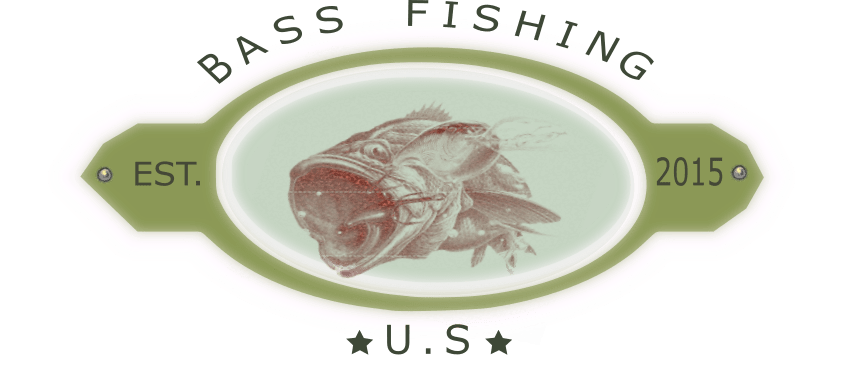
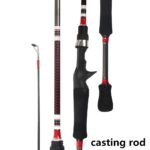
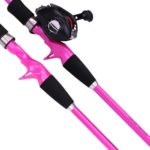


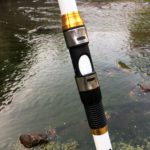


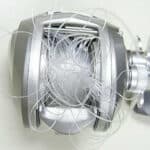
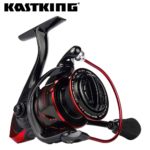
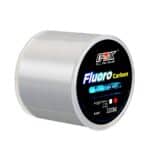
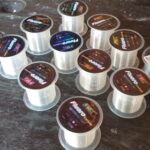
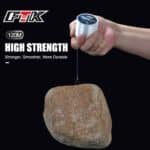
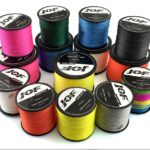


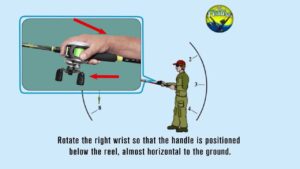
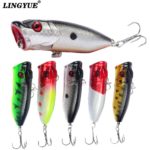
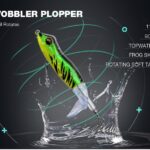

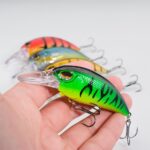


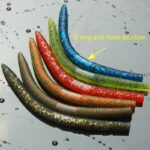

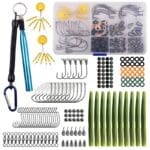
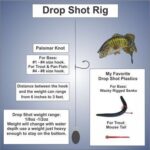
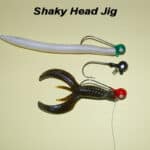
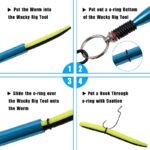
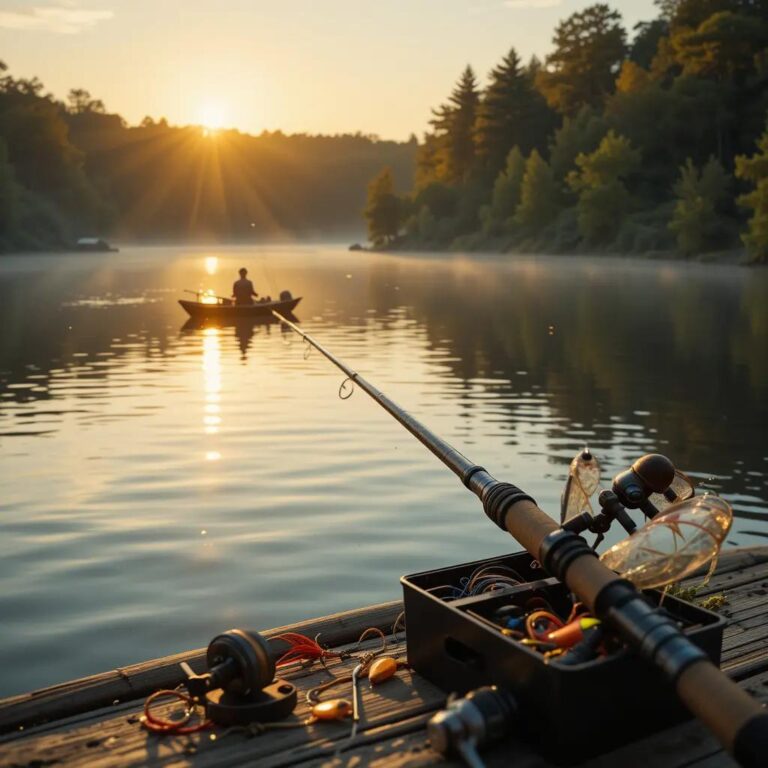
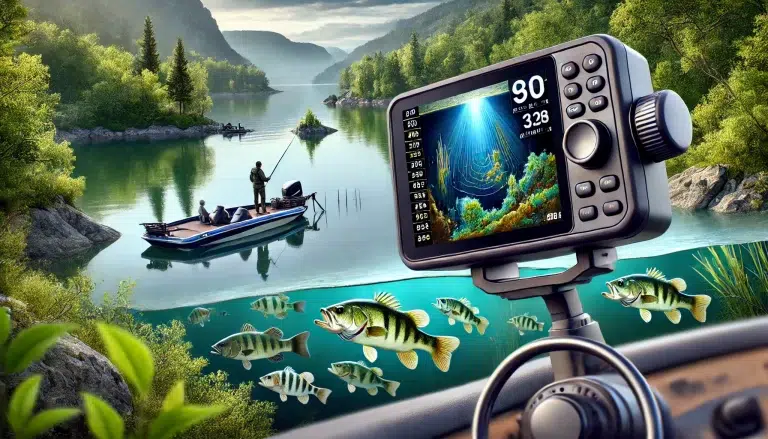
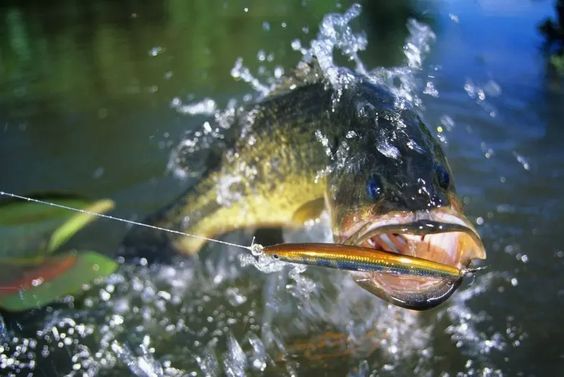
Leave a comment